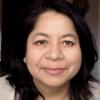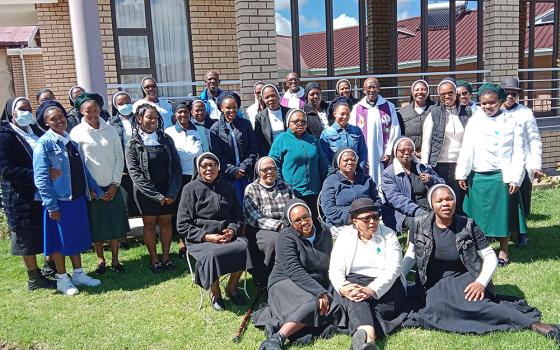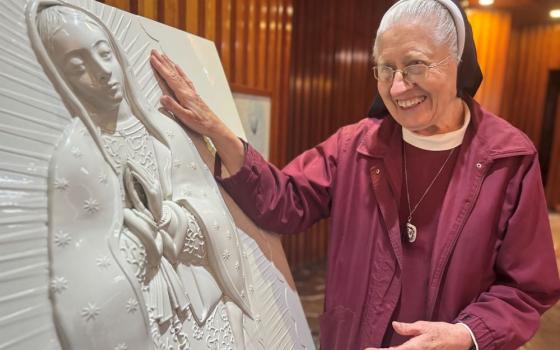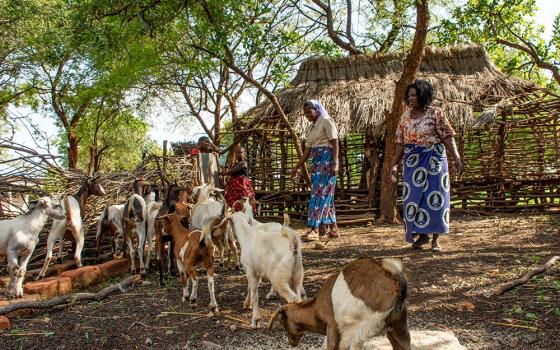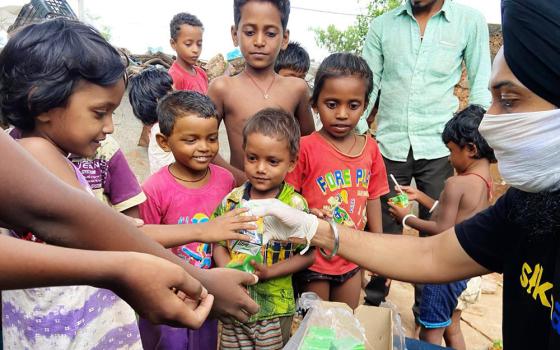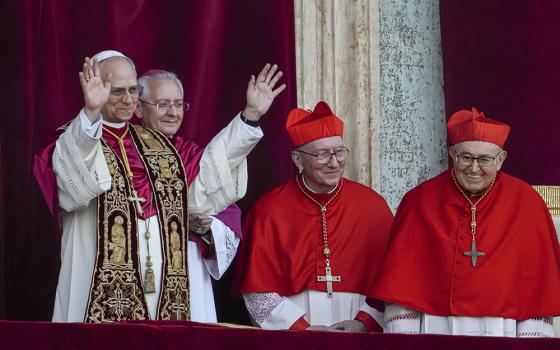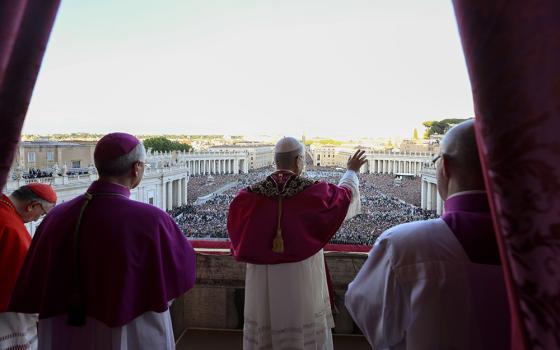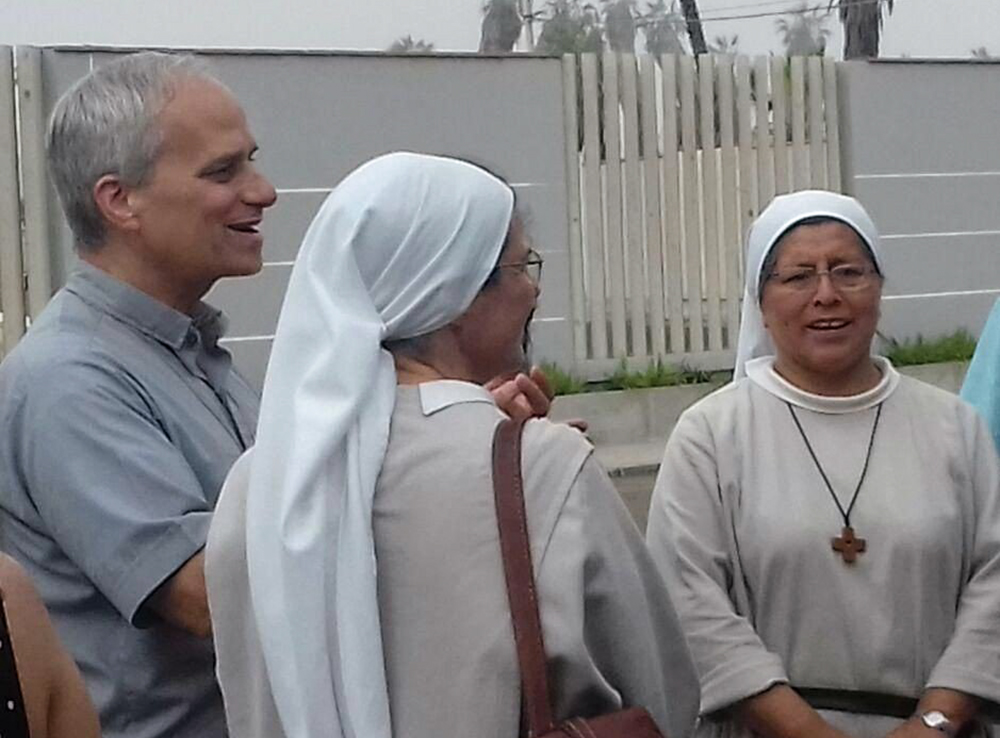
The future Pope Leo XIV visits with Augustinian sisters in Peru in this undated photo. As an Augustinian priest, then-Father Robert F. Prevost spent many years as a missionary in Peru and also served as bishop of that country's Chiclayo Diocese. (OSV News/Courtesy of Augustinian Sr. Carmen Toledano)
As headlines in major U.S. publications on May 8 blared that the first pope from the U.S. had been elected, newspapers in Peru, where he is a citizen, begged to differ.
"Leo XIV, el chiclayano," read one headline, claiming him as a son of Chiclayo, a city in the north coast of Peru, where he served as bishop from 2015 until 2023. "Habemus Papa peruano," said another. Pope Leo is "as Peruvian as a potato," read an insert with his photo on the cover.
Chicago moved in, marking a seat at the ballpark where he once sat to watch the White Sox play ball and saying it was creating a "holy corner." The Windy City's pizzerias whipped up new items to honor a pope born in their midst.
"The people from the U.S. say 'he's an American' ... the Peruvians say 'he's Peruvian' and now Spain says his DNA is Spanish because of his [second] last name, which is Martinez, and the French say he's French because of his [first] last name Prevost," Bishop Oswaldo Escobar of Chalatenango, El Salvador, said at a May 19 thanksgiving Mass for Leo XIV. "Everybody is fighting to claim him now. We're just waiting for El Salvador to say he's Salvadoran."
After stepping out to the main balcony of St. Peter's Basilica as Pope Leo XIV, he mentioned no nationality and instead identified himself as "a son of St. Augustine, an Augustinian."
More than any country where he's spent a considerable amount of time, whether it be Peru, the U.S. or Italy, it's his Augustinian identity that stands out most, said theologian Consuelo Vélez of Colombia.
Advertisement
"The pope has a Latin American nationality and he has worked in Latin America, shared the hard realities with people, broken bread with them," but it would be a stretch, as many have done, to call him the second Latin American pope after Francis, she said.
"He's an Augustinian who has experienced Peru as a missionary and that is a rich experience. But would I say he's a Latin American? No."
He's quiet. He tries to stick to the script. He measures his words, she said. He doesn't have the same "spontaneous, improvisational, whatever you want to call it," style as Pope Francis, she said.
Mercy Sr. Patricia Mulderick, who worked with Leo in his early days in Chulucanas, Peru, said he has, however, been shaped by the same concerns felt by members of consecrated life, including Francis, who served in Latin America and faced a similar terrain.
"He's extremely caring of the same issues, especially the poor, the migrant community, folks like that," said Mulderick, who still has a difficult time calling him Pope Leo and refers to him as Roberto.
Consecrated life and the charism of his order, just as they shaped Francis as a Jesuit, have also shaped the new pope.
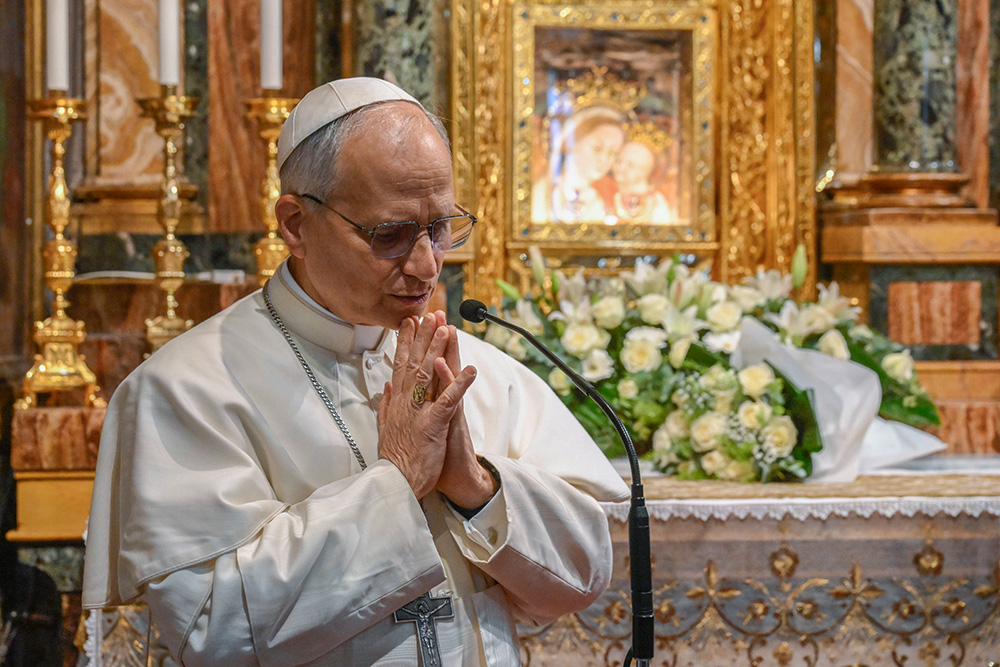
Pope Leo XIV leads prayers at the Shrine of Our Lady of Good Counsel in Genazzano, Italy, southeast of Rome, May 10, 2025. The shrine, with a famous image of Mary, is run by the pope's Augustinian confreres. (CNS/Vatican Media)
"Roberto was an Augustinian for the Augustinians," she said. "He is so steeped in consecrated life. He is steeped in the whole sense of community of the Augustinians, that whole community of friends. They really take that seriously."
Augustinian Sr. Marlene Quispe, who has known the pope from his early days in Peru, said the order's charism is focused on unity, the search for truth, and an inner life, to help members be of service to their religious community and to others. As a religious brother, Leo was someone who incarnated all those things, she said, which helped him translate his prayers into action when others inside and outside the community needed help.
"When we had the big floods, he was there with his people trying to help," said Mulderick of how, as bishop, he put on a pair of rubber boots and waded through standing water to feed and take supplies to Peruvians in 2023 when torrential rains pummeled Chiclayo.
In 2020, when COVID-19 arrived, he secured oxygen tanks for the poor.
Peru, in the midst of its troubles, gave him the opportunity to put the Gospel at the center of life and into action, said Cuzco Auxiliary Bishop Lizardo Estrada Herrera, who also is an Augustinian.
Like many in consecrated life, Pope Leo understands that 'you can't adore God and forget about the most fragile, you can't kneel before the Blessed Sacrament and forget about the weak.'
Estrada, now the secretary general of the Latin American bishops' conference, known as CELAM, met the future pope in the 1980s. Back then, Estrada was one of 70 young men starting out in religious life with the Augustinians in Trujillo, Peru, and Prevost was his religious formator.
Prevost, a Chicago native, had arrived in Peru in 1985. He left at times for long stints in the U.S. as well as Rome. But he always returned to help with vocations like Estrada's, to live and help others as a missionary priest amid rising poverty and violence in the country.
It was to Peru that Leo directed some of his first words as pontiff, veering away from Italian to address them in Spanish, thanking Chiclayo for accompanying him as their bishop.
"He loves Peru and Peru loves him," and there's no doubt that life as an Augustinian missionary there changed him, said Estrada.
And while many recall the idyllic times of his years as a missionary there, little has been said about how he was affected by living in a country battered by the violence of the communist group Shining Path, which started terrorizing the country in the 1980s, or by the corruption that produced economic woes that forced mass migration of Peruvians.
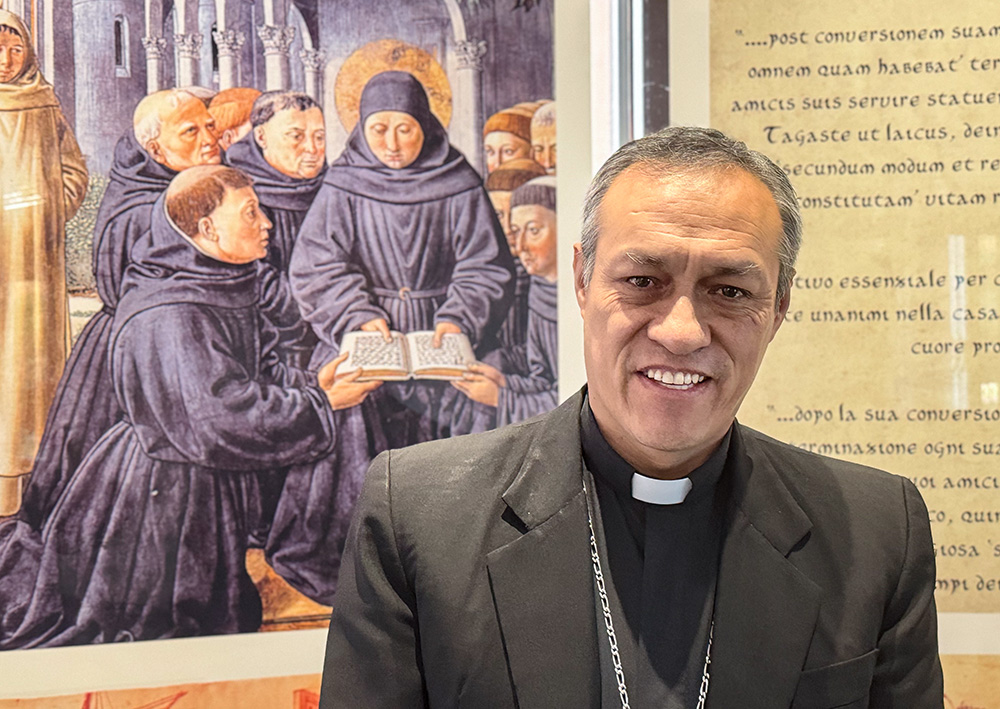
Auxiliary Bishop Lizardo Estrada Herrera of Cuzco, Peru, poses in front of a depiction of St. Augustine in the lobby of the Augustinian curia near St. Peter’s Basilica May 10, 2025. The pope loves Peru and there’s no doubt that life as an Augustinian missionary there shaped him as have other experiences in his life, said Estrada, general secretary of the Latin American Bishops Conference. (GSR photo/ Rhina Guidos)
Leo has not been untouched by their hardships, Estrada said, and like many in consecrated life, he understands that "you can't adore God and forget about the most fragile, you can't kneel before the Blessed Sacrament and forget about the weak."
Because of this, the new pope will call out injustice, emphasize the common good, and defend the fragile, Estrada said. Being from the United States, understanding its culture and mentality in a way that other popes may not have fully grasped, could give him an edge as a bridge builder, Estrada said.
"Of course he will have influence," not strictly because he's from the U.S., but because he understands a wide range of experiences, Estrada said.
But because Leo spent time in Latin America, people shouldn't expect a Francis 2.0, in his personality nor in the way he'll guide the church, or they'll be disappointed, said Vélez. She said that so far, he sounds as if he will be "explicit" in social doctrine, but conservative in doctrinal matters.
"He hasn't said the word clericalism yet," Vélez said.
Mulderick, too, said that he will be a different pope but he above all, he is a man of God.
"I don't see that he'll be as extroverted as Pope Francis," she said. "And he's a centrist, so I'm not sure where he'll be on some issues. But someone asked me, how I thought his time in Peru formed him, and I said you cannot be among our people without it truly forming your very being."
